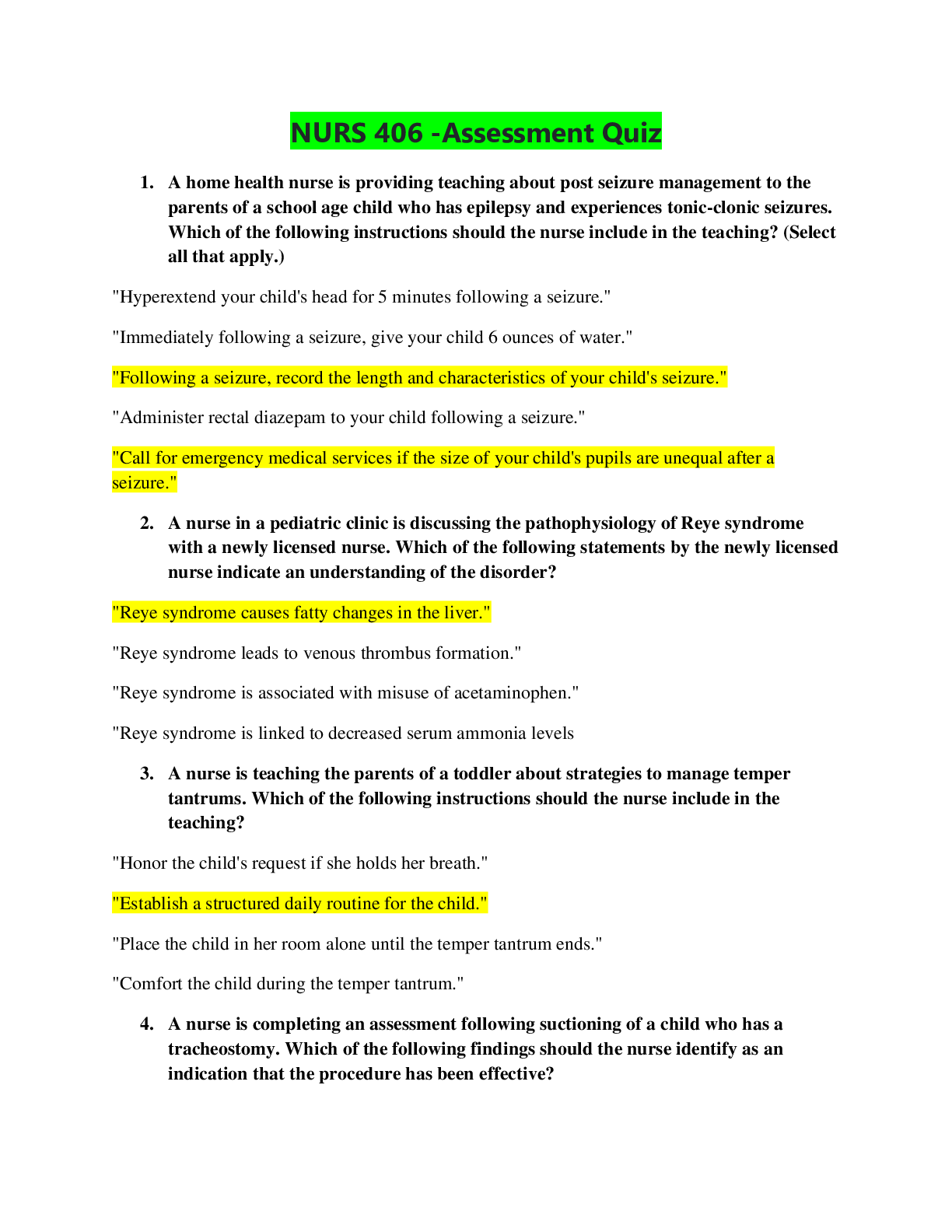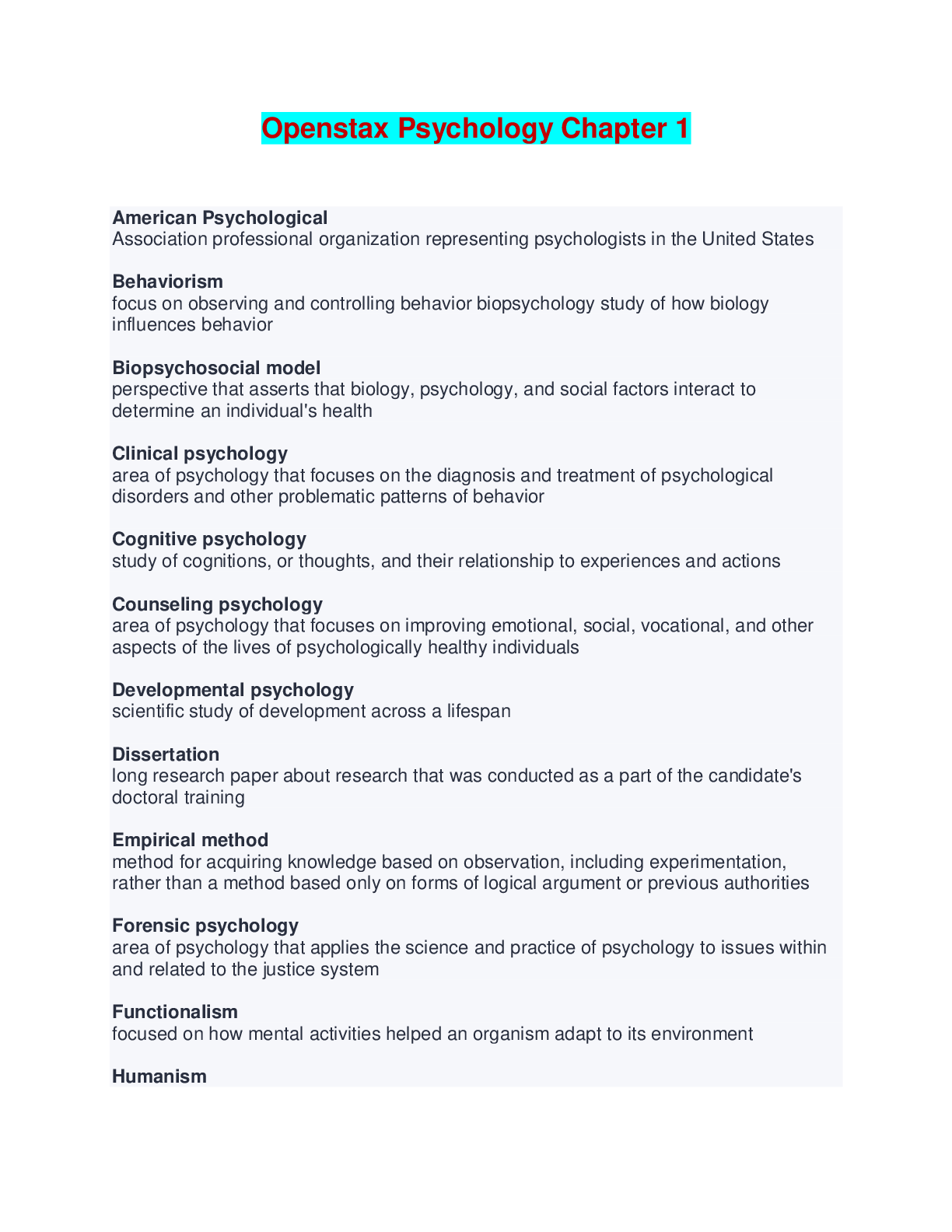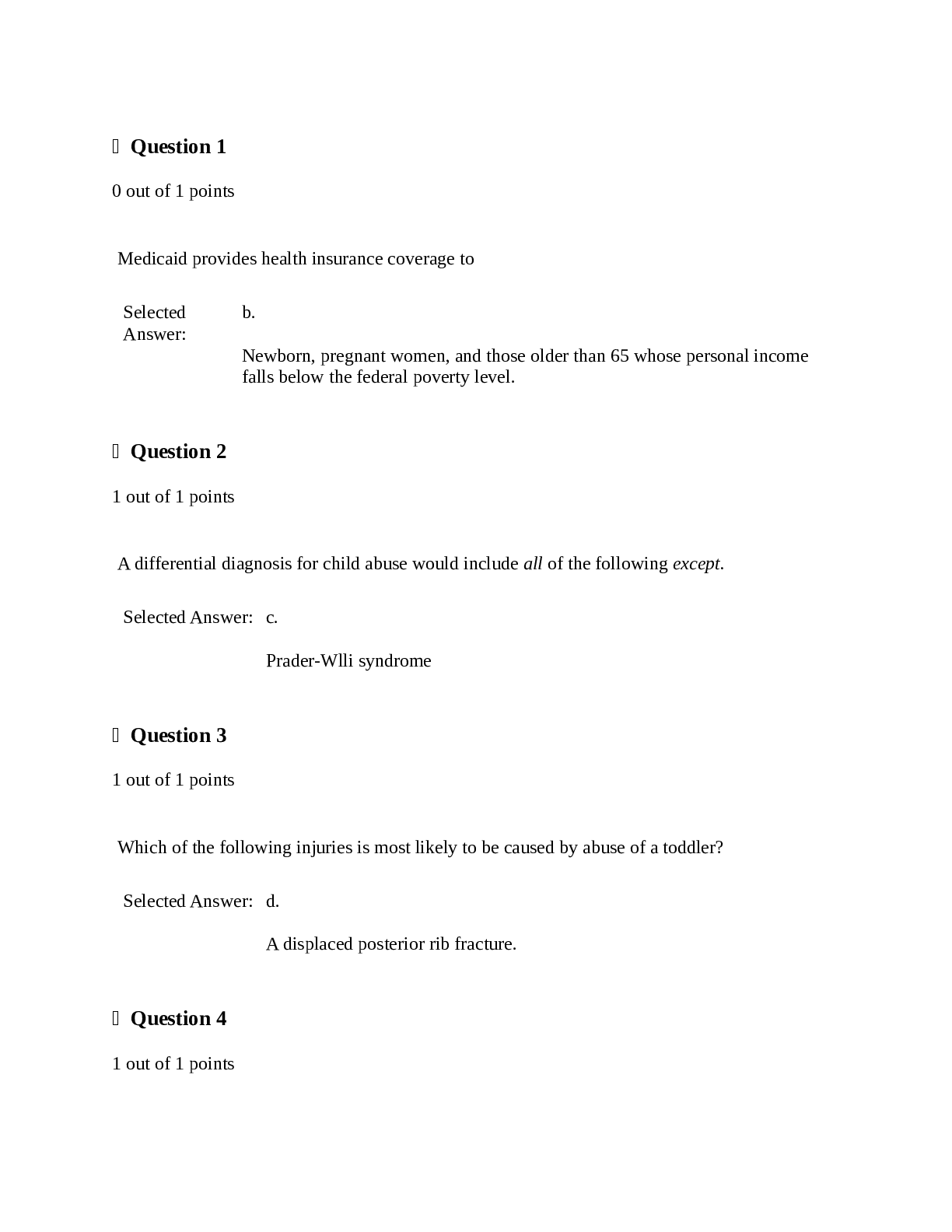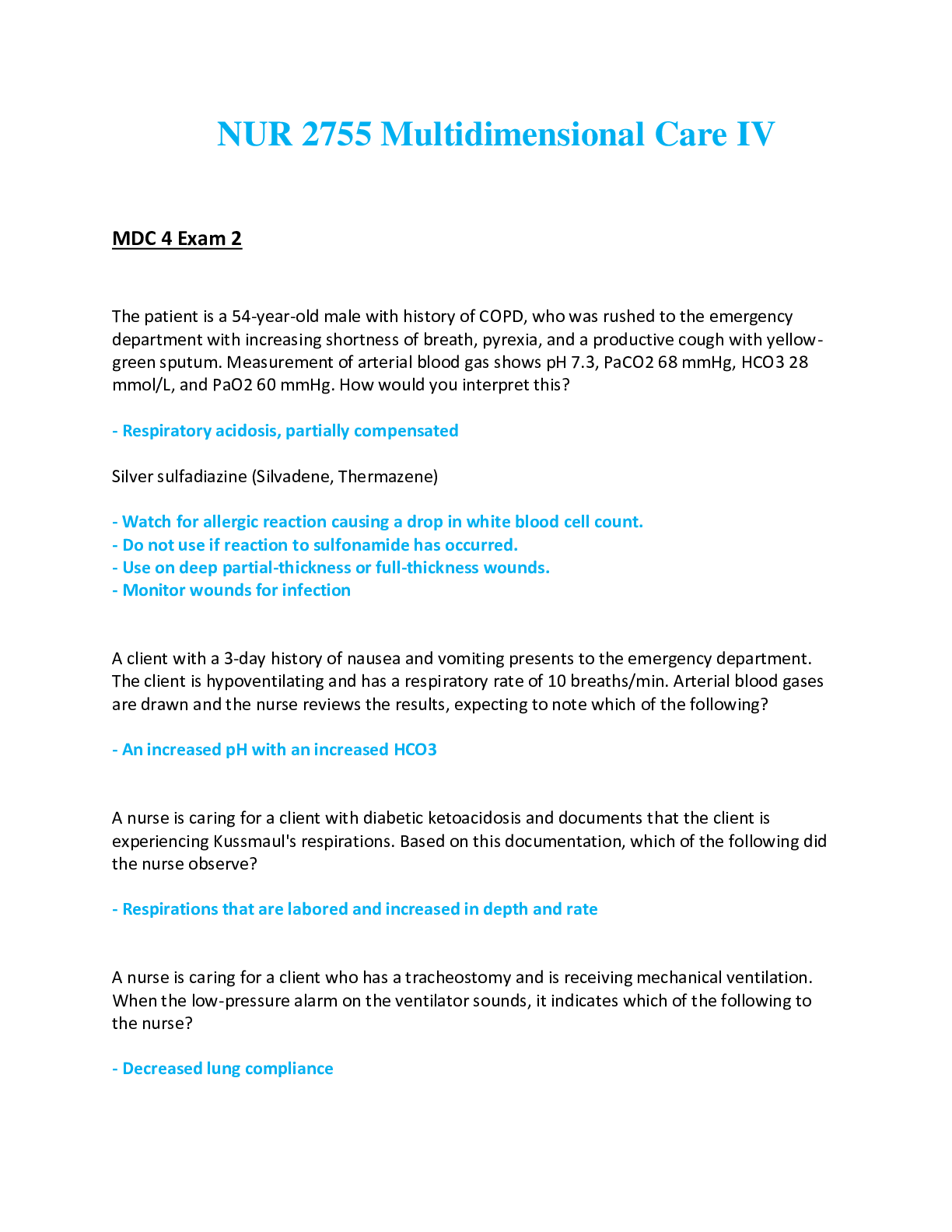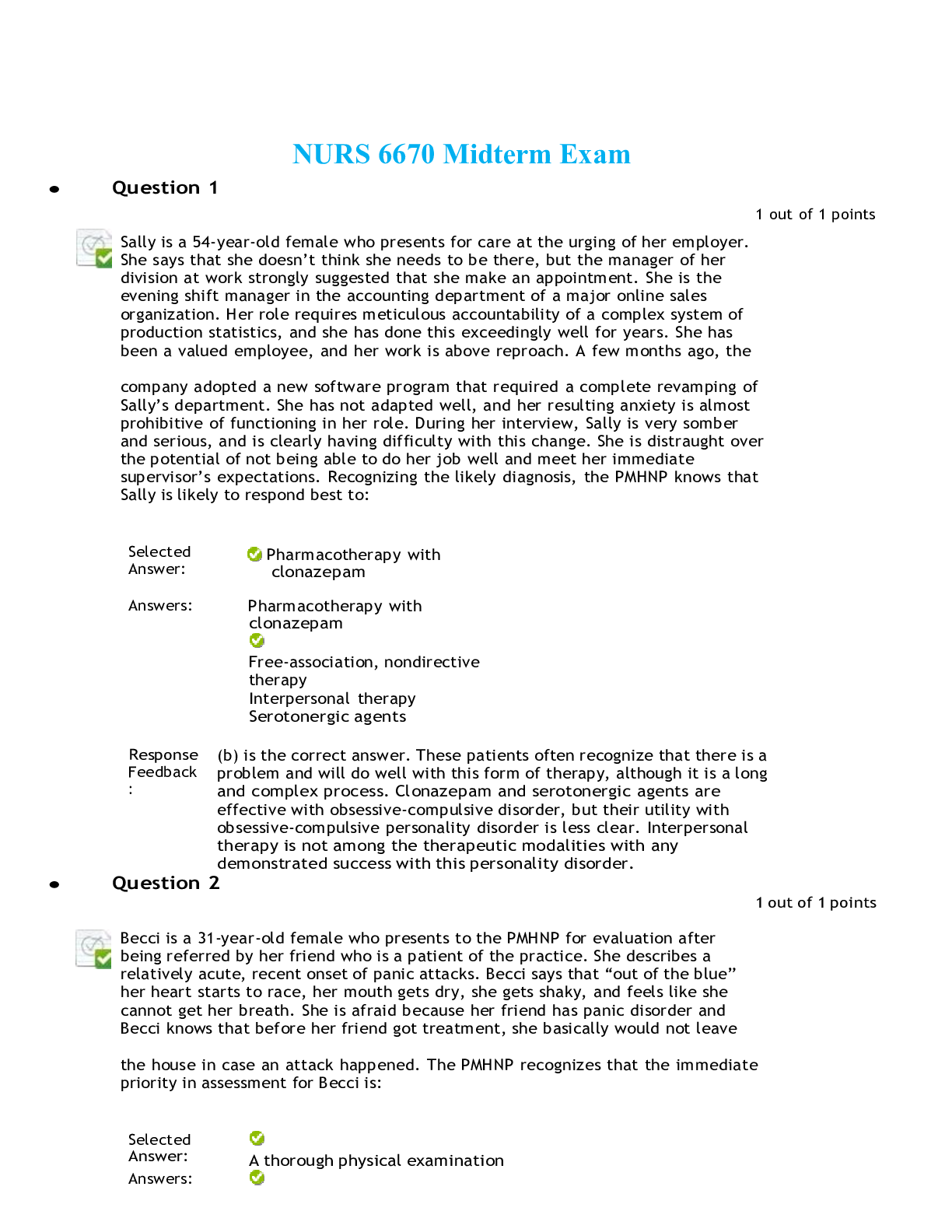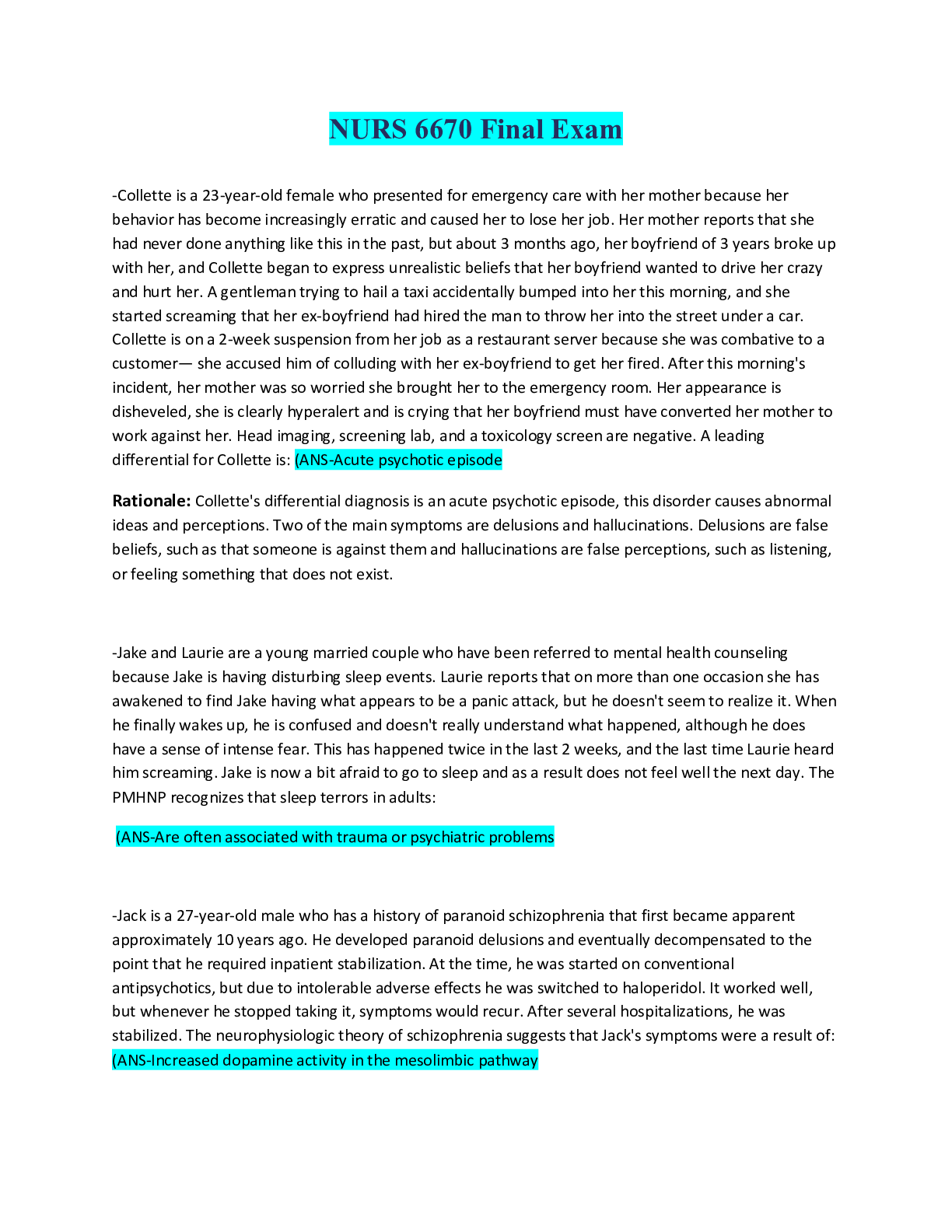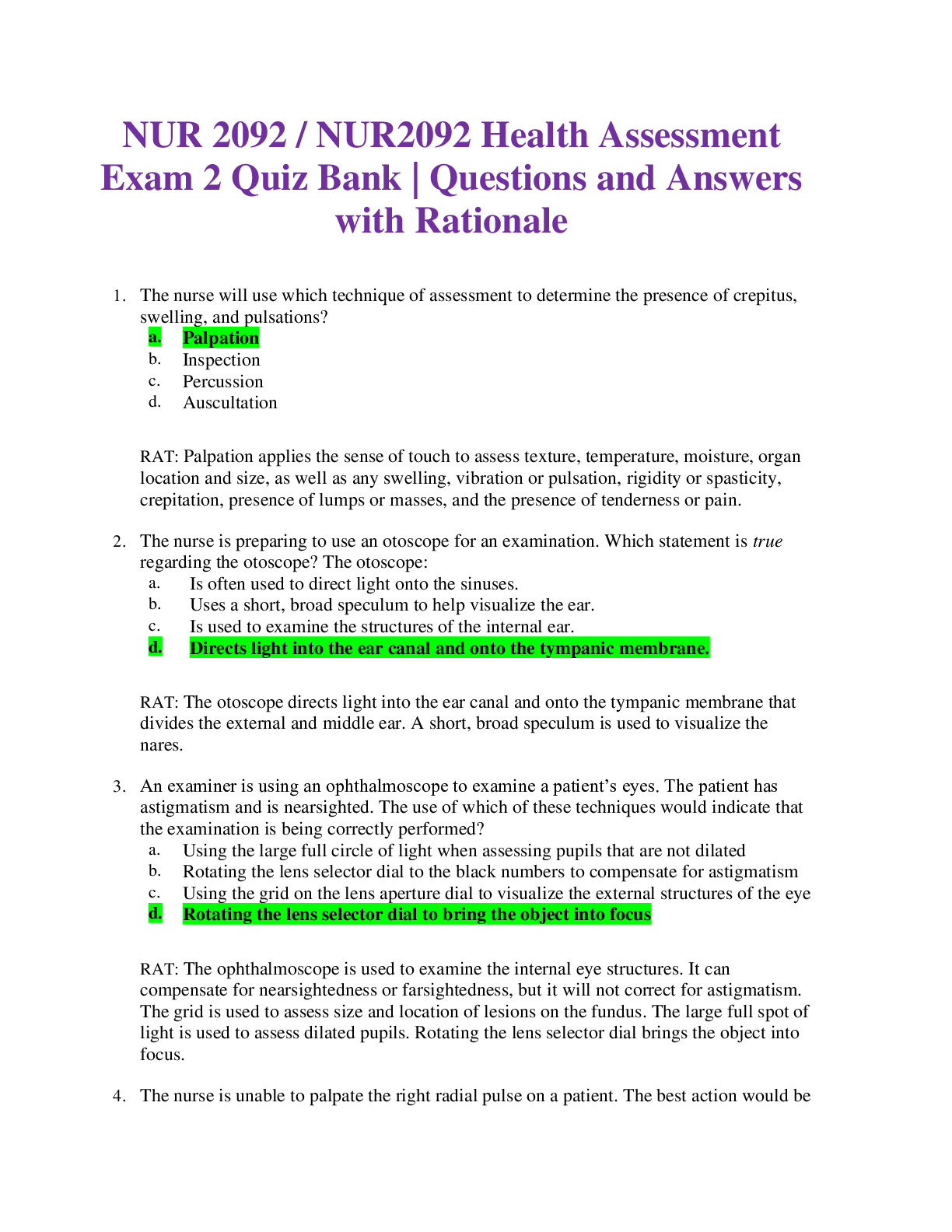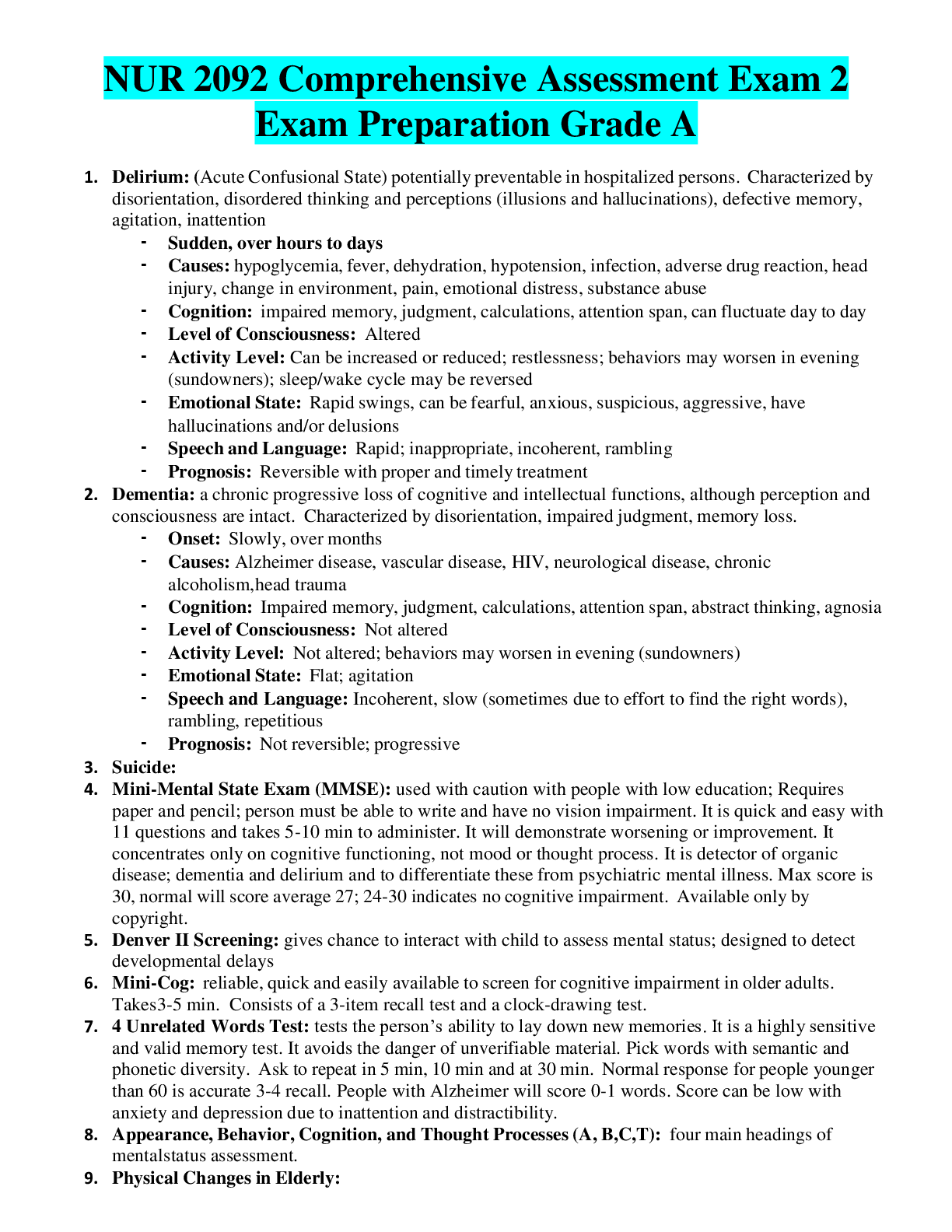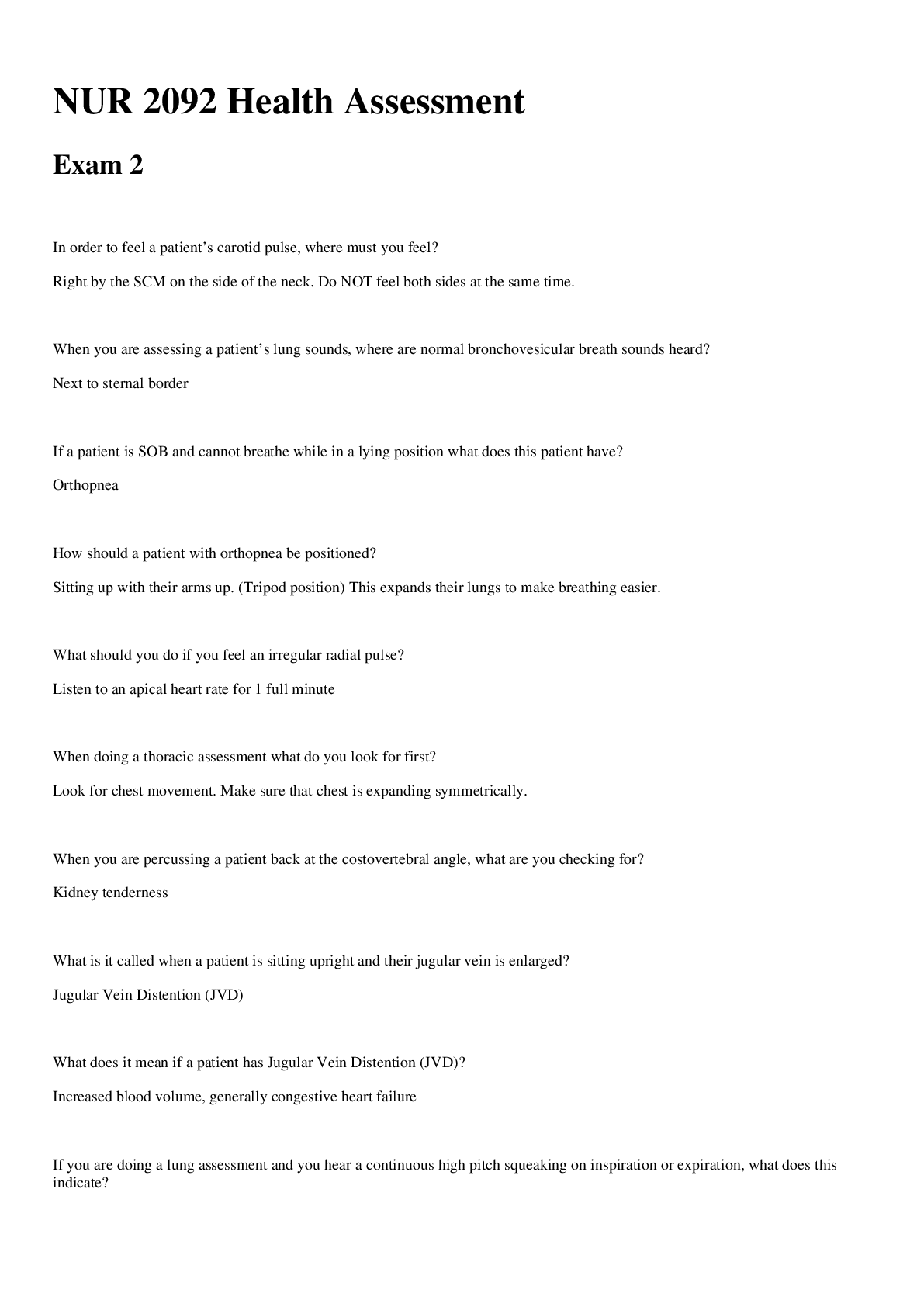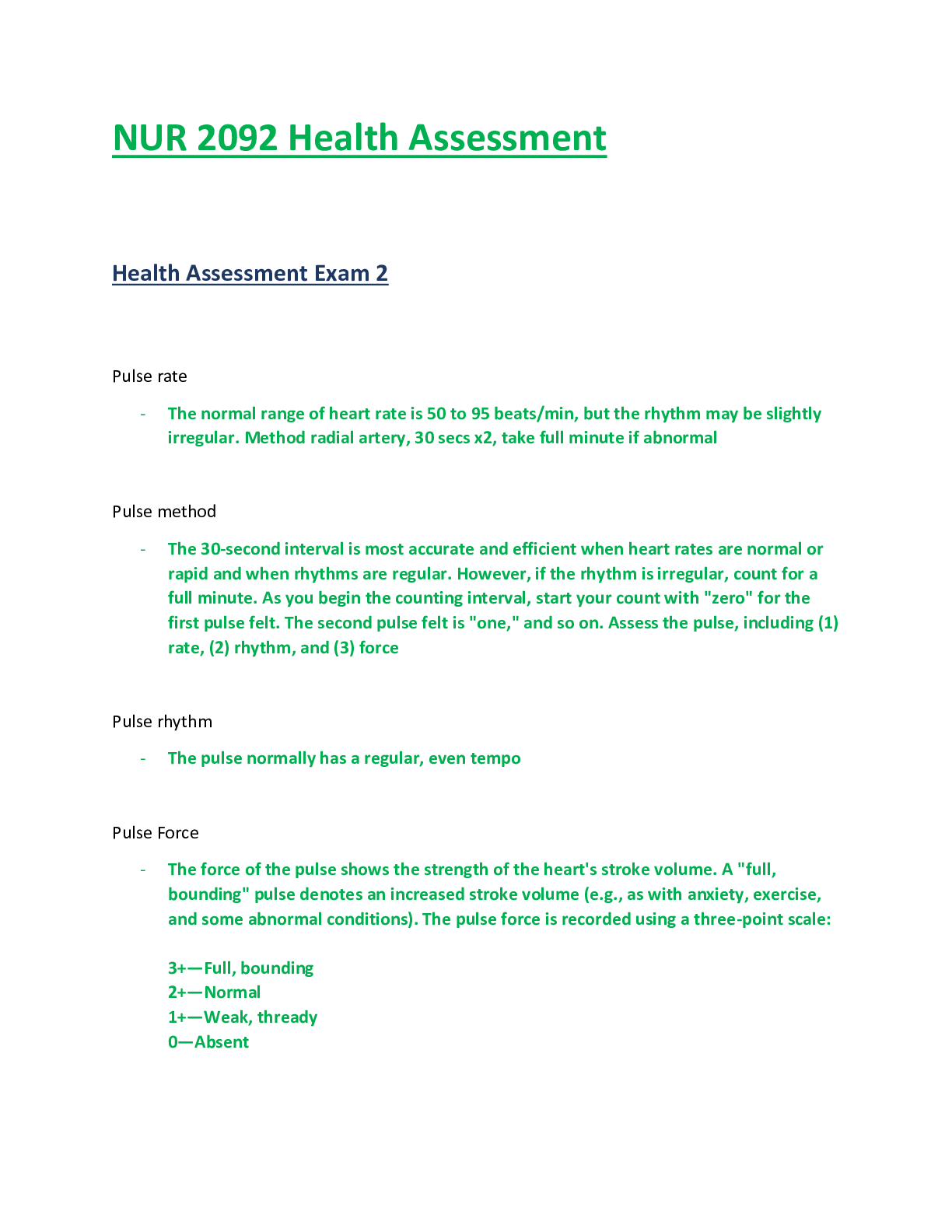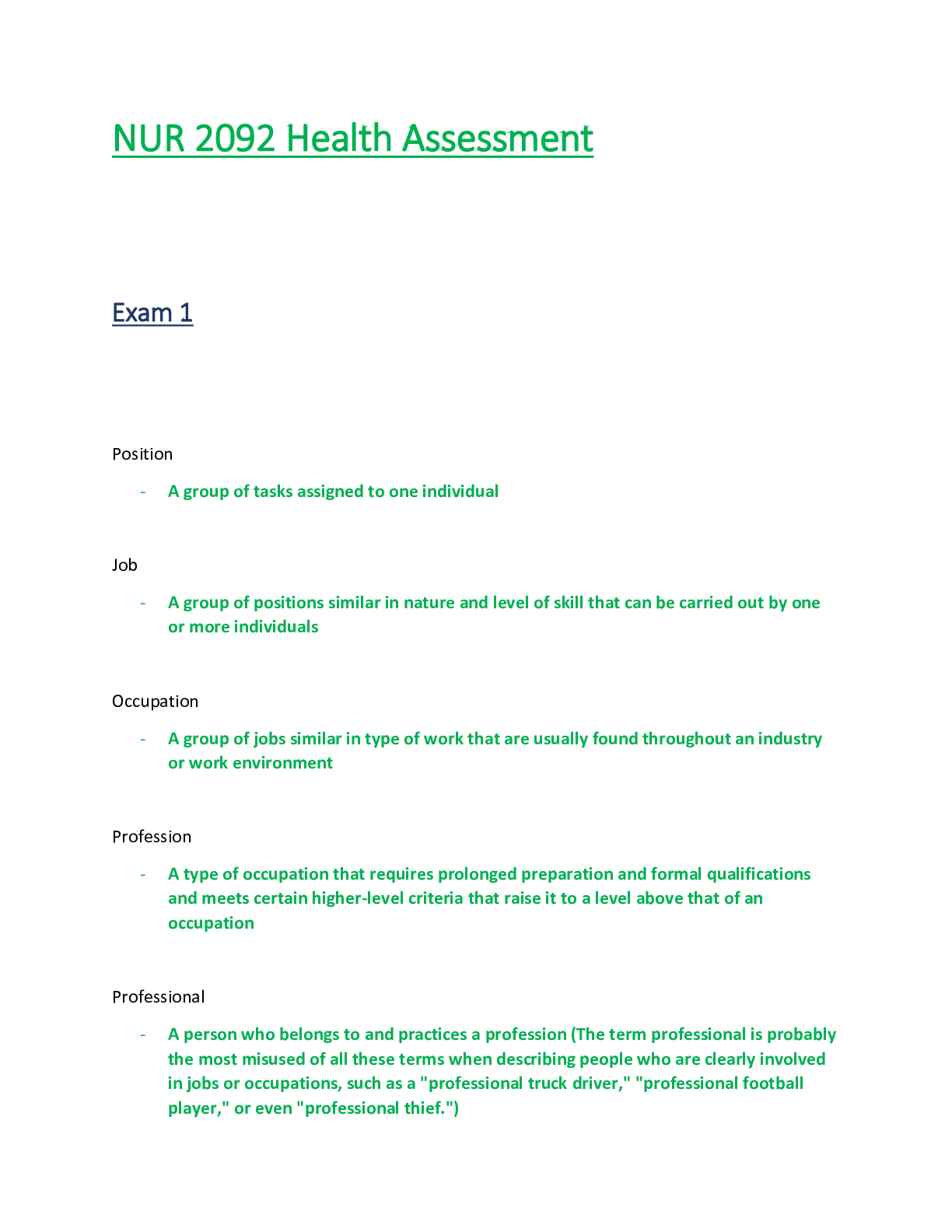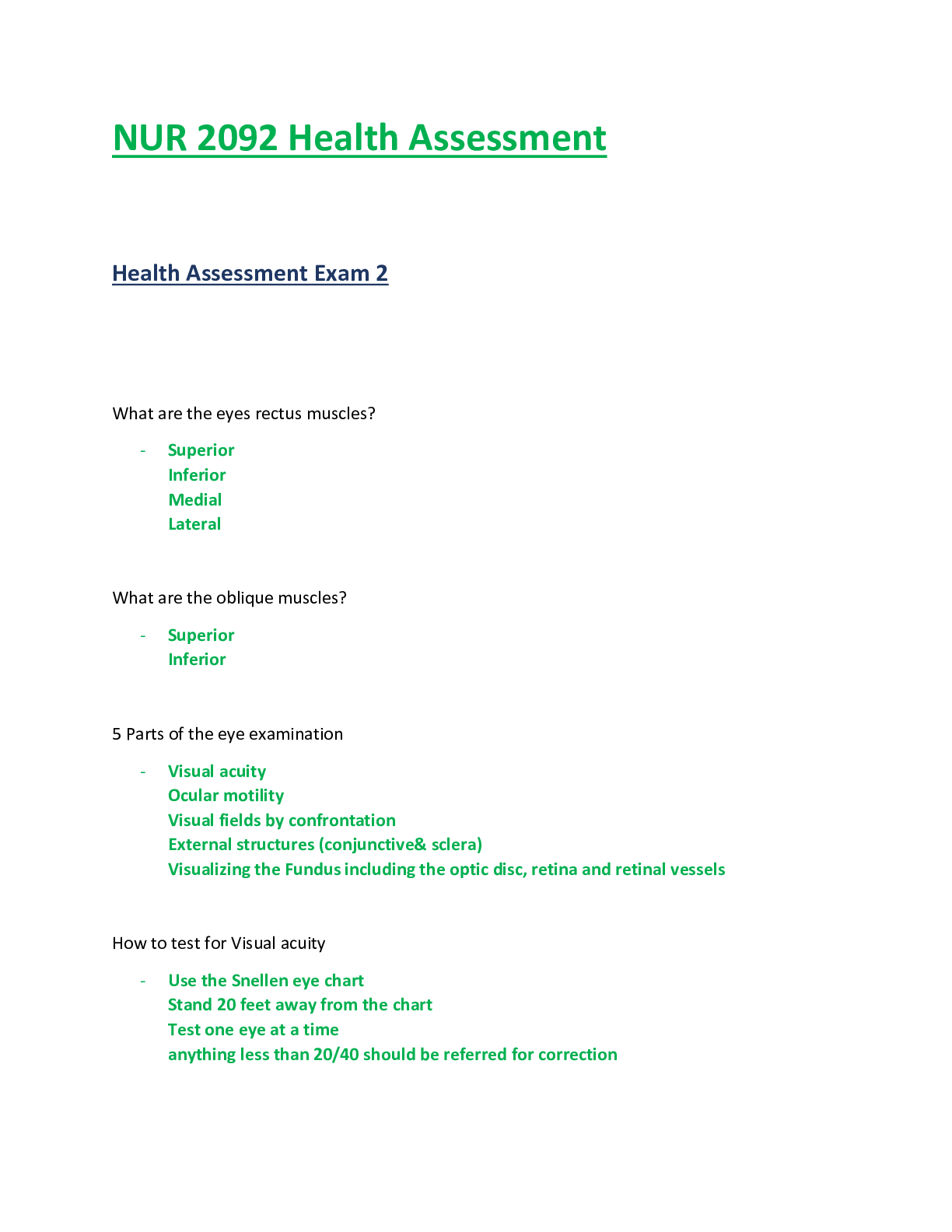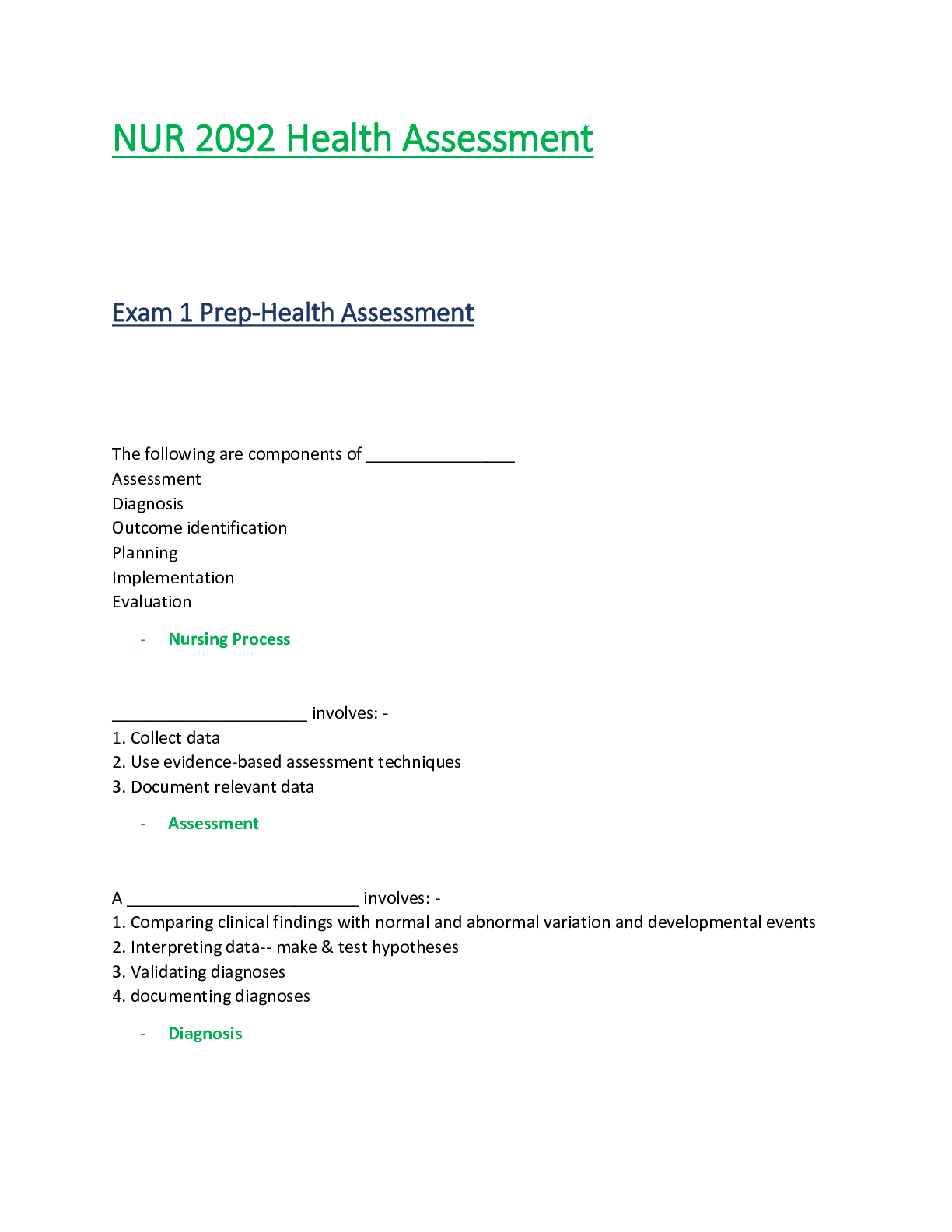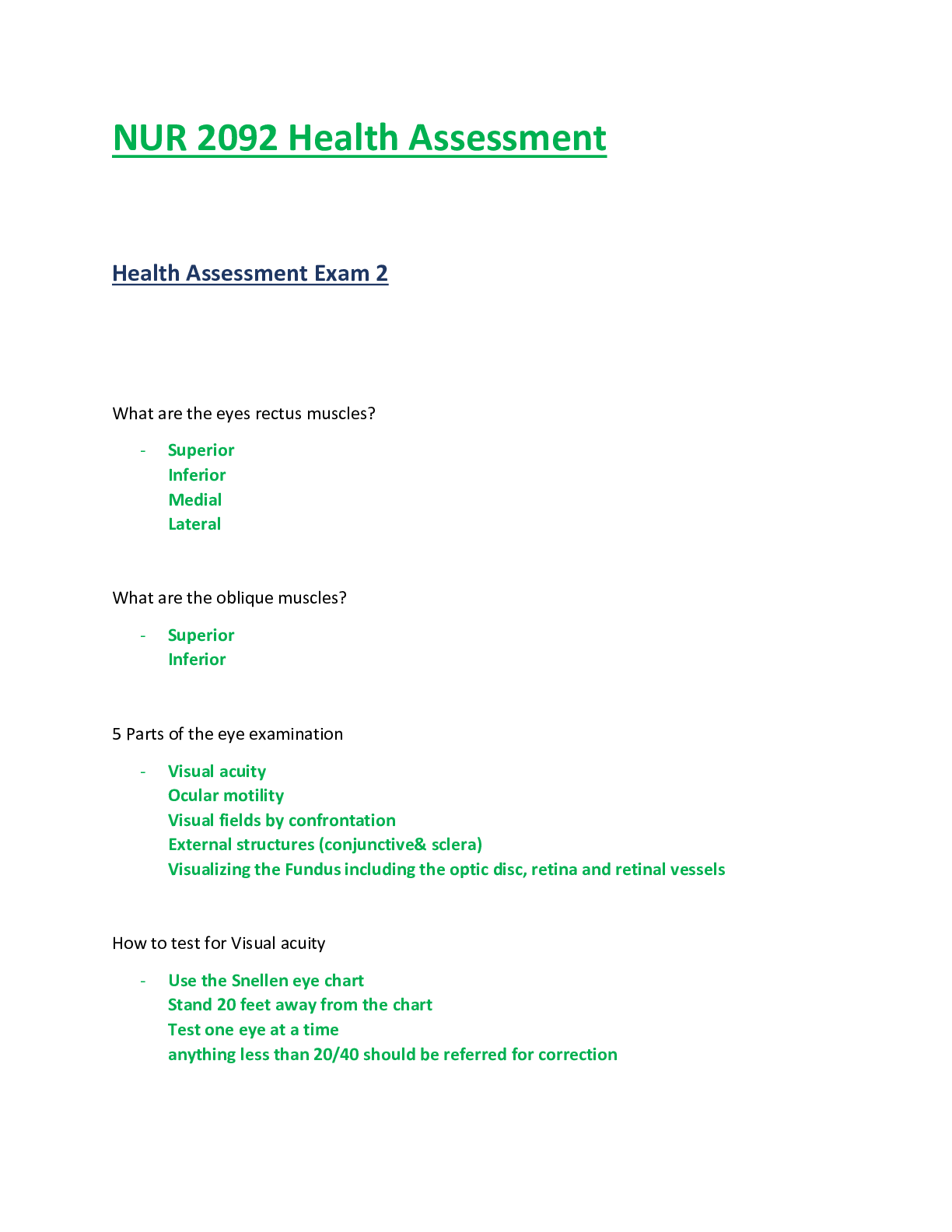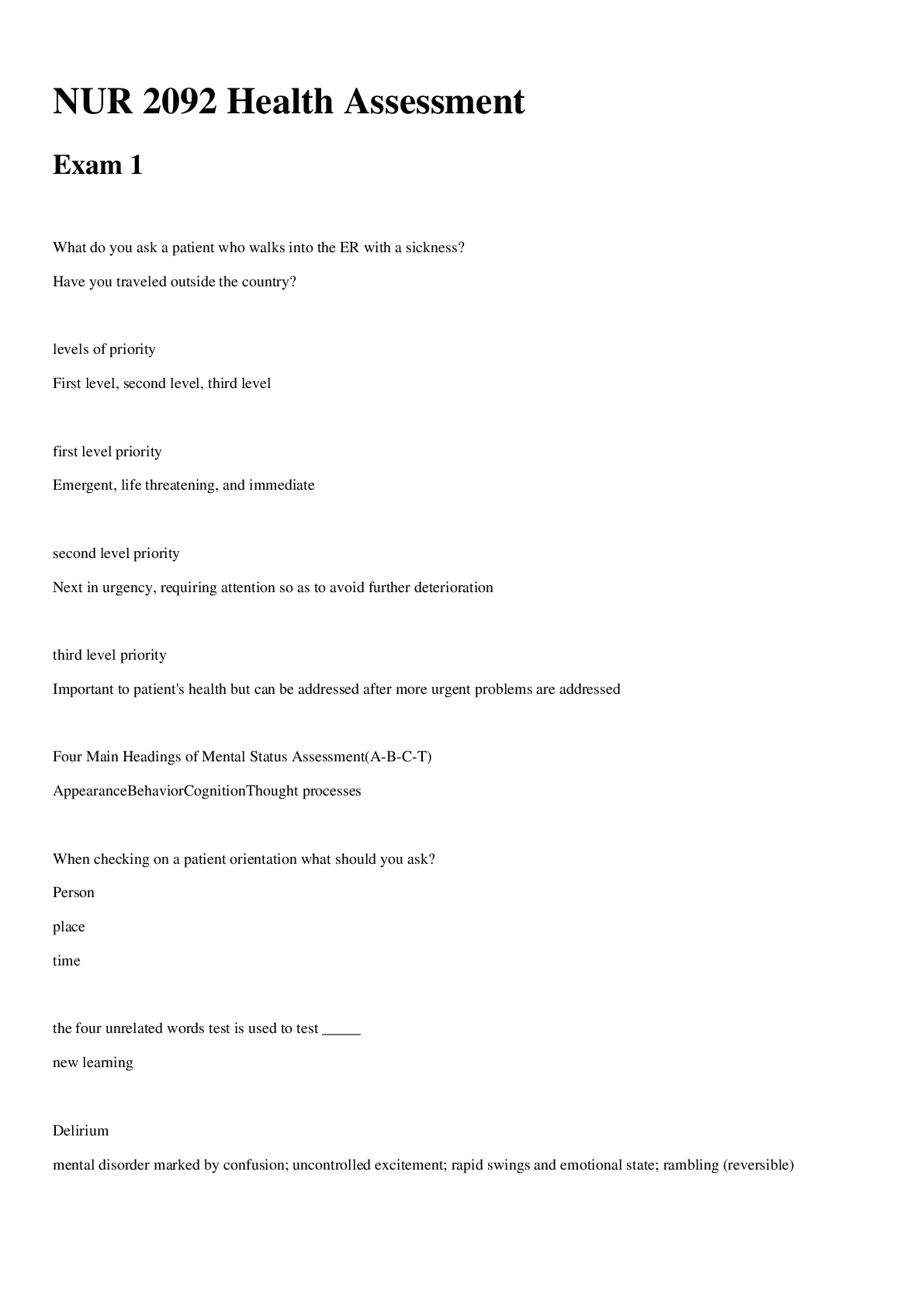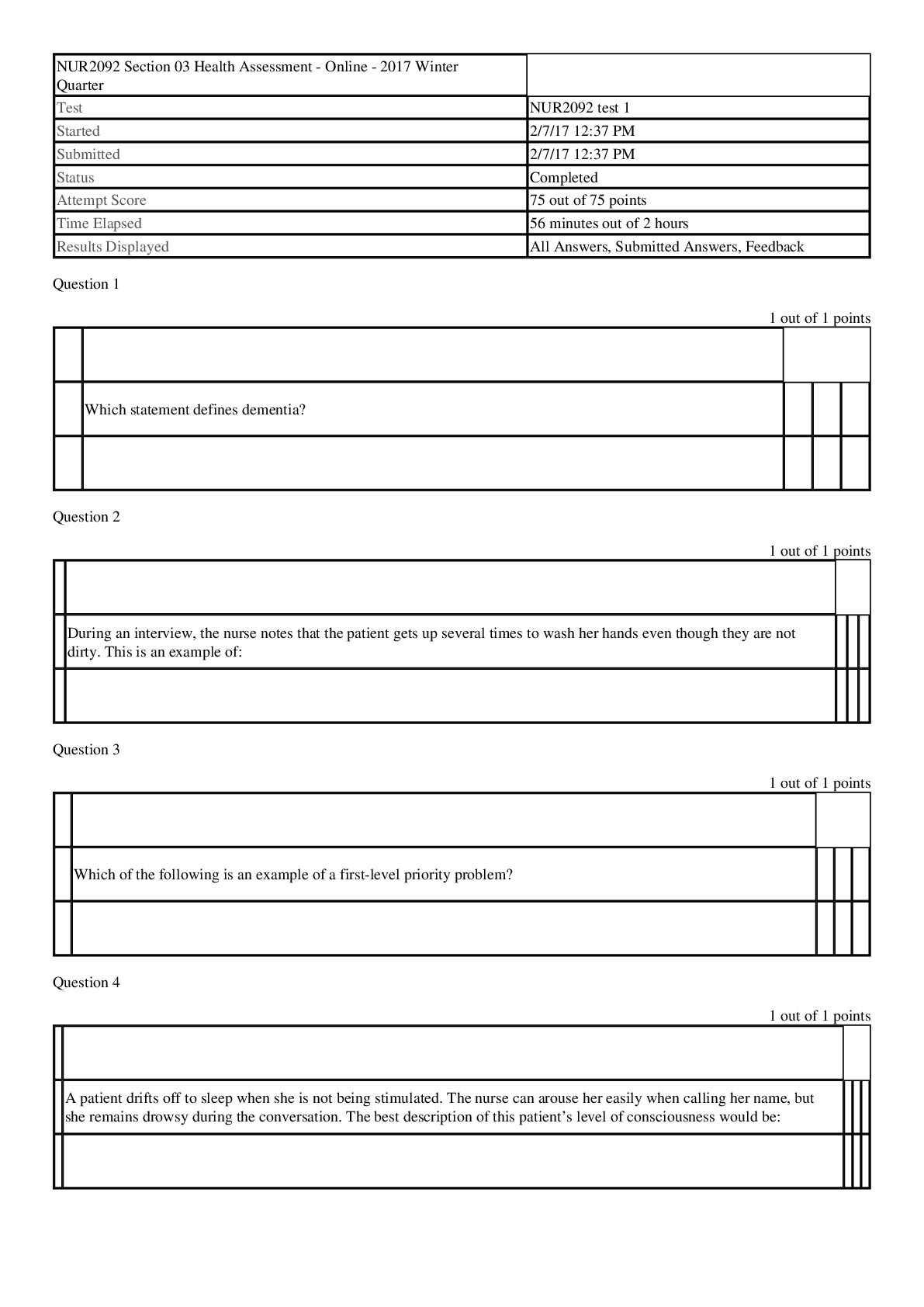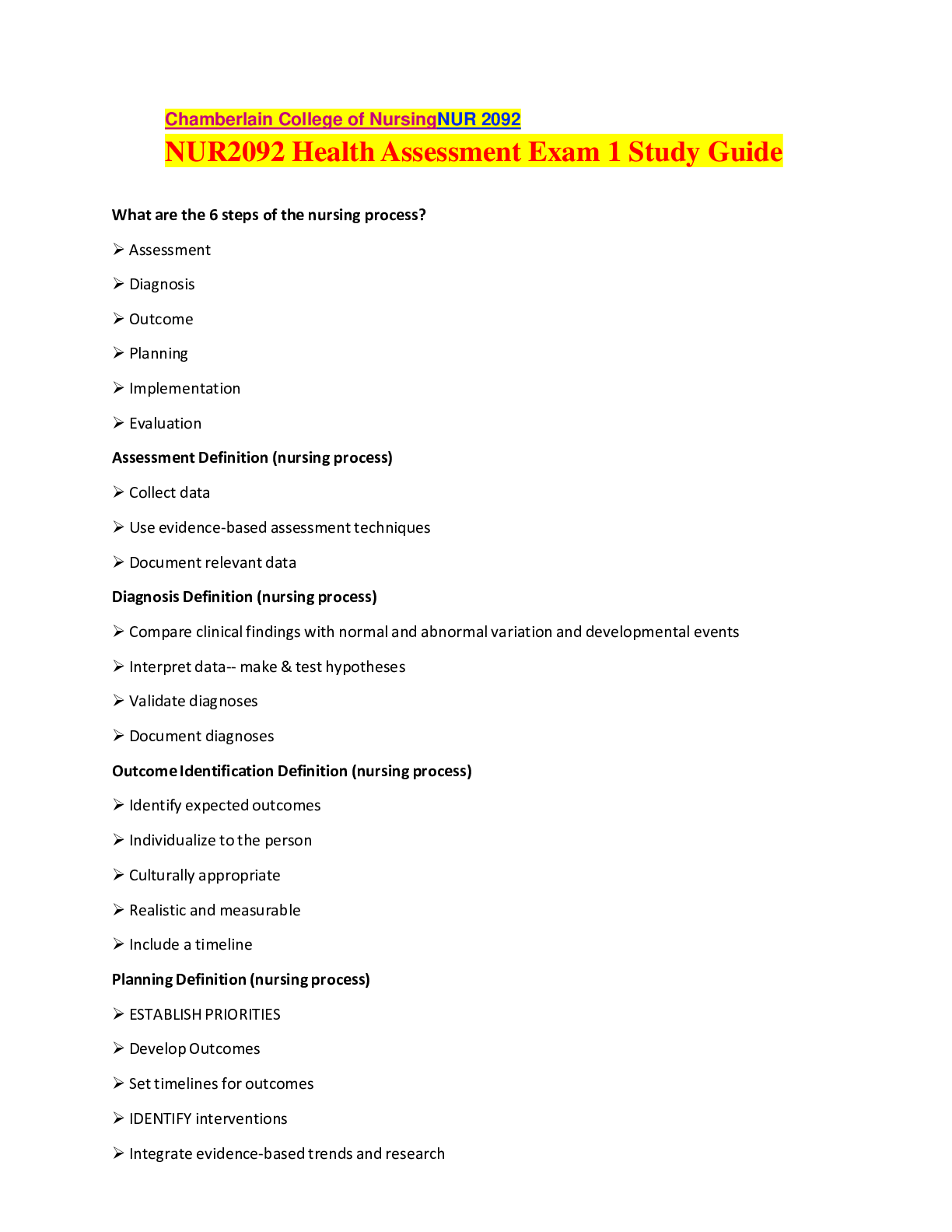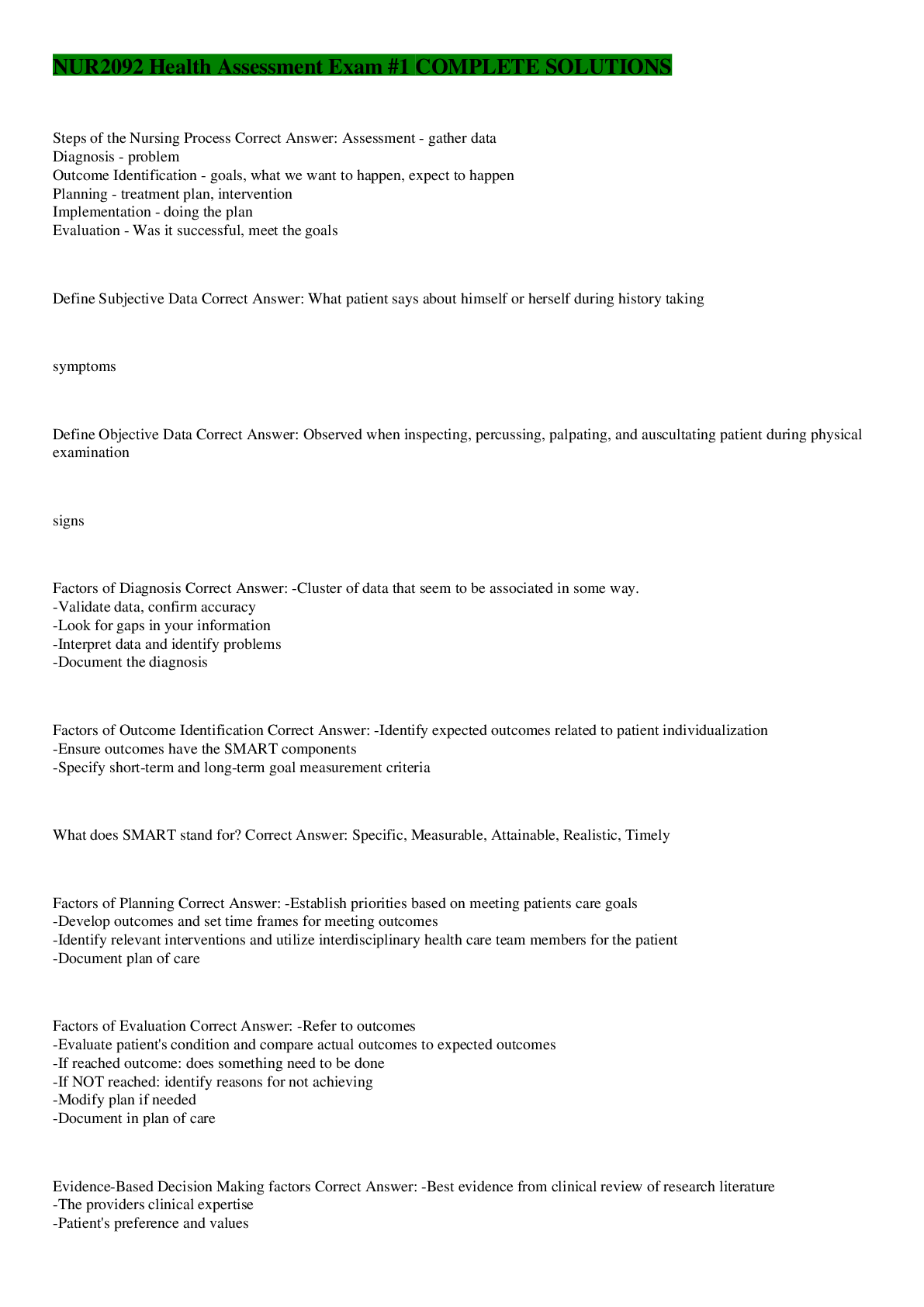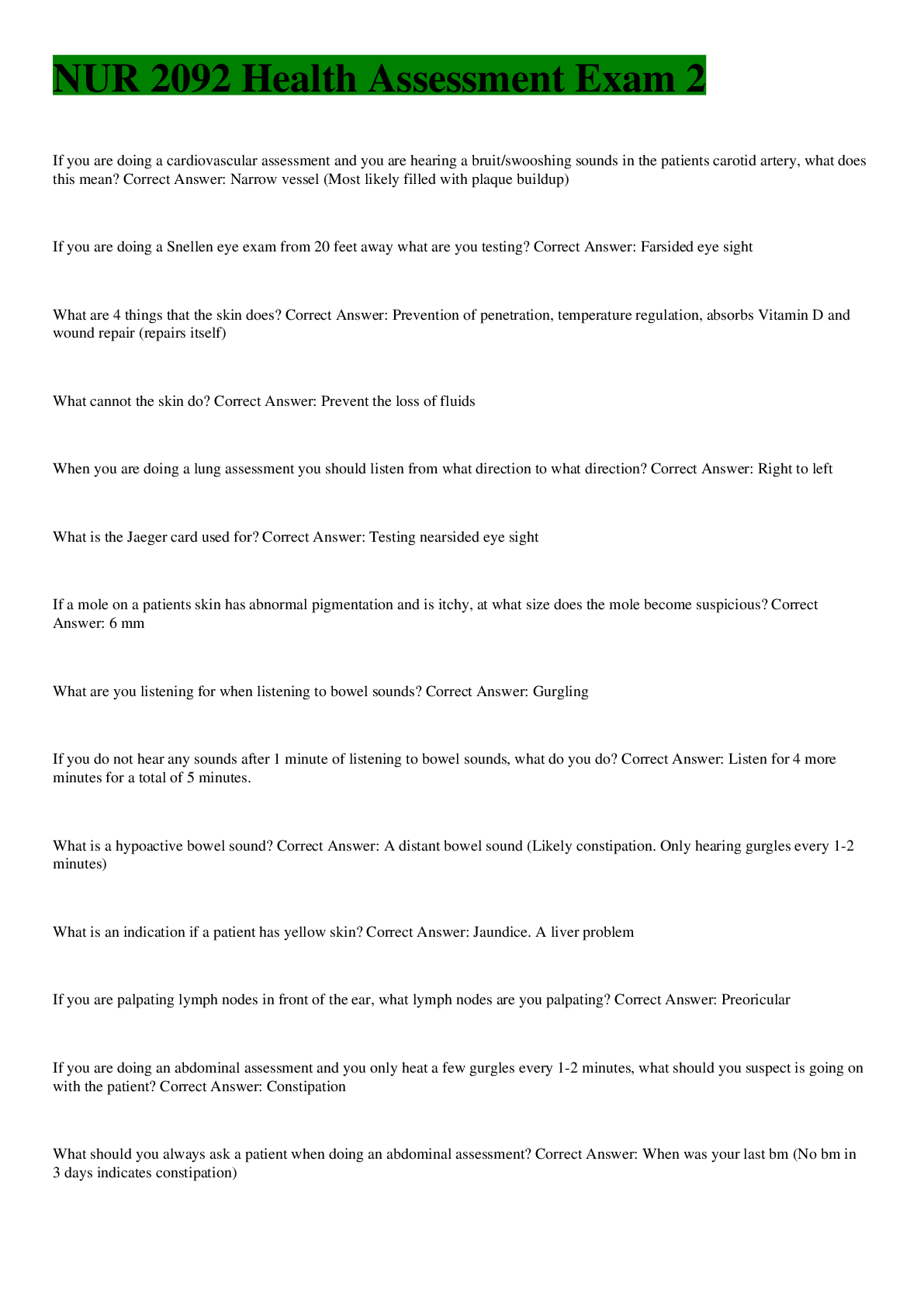NURS 612 HEALTH ASSESSMENT Exam 2 - QUESTIONS AND ANSWERS
Document Content and Description Below
NURS 612 HEALTH ASSESSMENT Exam 2 Hypothyroidism: subjective findings? - Weight gain, constipation, fatigue, cold intolerance. Hypothyroidism: objective findings? - Normal size thyroid, possible goit... er, nodules. Hyperthyroidism: pathophysiology? - Excess thyroid hormone causes an increase in the metabolic rate. Associated with an increased total body heat production and increased heart contractility, heart rate, vasodilation. Multinodular goiter (Plummer Disease). Hyperthyroidism: subjective findings? - Weight-loss, tachycardia, heat sensitivity, diarrhea.Hyperthyroidism: objective findings? - Normal size thyroid. Possible Goiter. Nodules. Fine textured hair. Brittle nails. Proptosis (protrusion of the eye). Pleurisy: pathophysiology? - Inflammatory process of the visceral and parietal pleura. Can be a result of a PE or an infection (bacterial/viral), or connective tissue disease (Lupus). Can also be a result of tumor or asbestosis. Pleurisy: subjective findings? - Sudden onset with chest pain when taking a deep breath or cough. Rubbing of the pleural surfaces can be heard by the patient. Pain may be referred to ipsilateral (same side) shoulder or may be close to the diaphragm. Pleurisy: objective findings? - Pleural friction rub heard on auscultation. Fever. Tachypnea. Shallow breathing pattern. Pleural Effusion: pathophysiology? - Excessive non-purulent fluid in the pleural space. Sources of fluid may vary and include infection, heart failure, renal insufficiency, connective tissue disease, neoplasm, or trauma. Pleural Effusion: subjective findings? - Cough with progressive dyspnea. Pleuritic chest pain, if there is associated inflammation. Pleural Effusion: objective findings? - Inspection: Diminished and delayed respiratory movement on affected side. - Palpation: Trachea shifted. Diminished remits. Tachycadia. - Percussion: Dullness and flatness. Hyperrsonance above the affected area. - Ausucultation: Diminished to absent breath sounds. Crackles. Bronchophony, whispered pectoriloquy, or egophony. Occasional friction rub. Pneumonia: pathophysiology? - Inflammation response of the bronchioles and alveoli due to an infective agent. Acute infection may be due to different organisms either community or hospital acquired. Concomitant inflammatory exudates lead to lung consolidation. Pneumonia: subjective findings? - Bacterial: rapid onset of cough, pleuritic chest pain, and dyspnea. - Mycobacterial, fungal (atypical): onset is more insidious. - Sputum production common - bacterial. - Chills, fevers, rigors, and nonspecific abdominal - N/V may be present. - Involvement of 10th and 11th thoracic nerves can cause RLQ pain and stimulate an abdominal issue. [Show More]
Last updated: 1 year ago
Preview 1 out of 21 pages

Reviews( 1 )

by Ed Emeans · 1 year ago
Document information
Connected school, study & course
About the document
Uploaded On
Feb 16, 2022
Number of pages
21
Written in
Additional information
This document has been written for:
Uploaded
Feb 16, 2022
Downloads
1
Views
173







